The Importance of Entering and Expanding into the Multilingual Web World
![]()
In today’s world, where geographical borders have less meaning in the virtual space, #multilingual_website_design is no longer a competitive advantage, but an unavoidable necessity for any business that dreams of #global_expansion and attracting #international_audiences.
This approach allows you to convey a single message in various languages and cultures, thereby extending your sphere of influence beyond the borders of one country.
A multilingual website is a powerful platform for communicating with audiences whose native language is not Persian.
It enables visitors from all over the world to read your content in the language they feel most comfortable with.
This not only improves the user experience but also enhances your brand’s credibility and professionalism on a global scale.
This approach is not limited to text translation but includes content localization, adherence to cultural considerations, and providing a unified user experience for each language.
The importance of this issue is doubled, especially in emerging markets and developing countries where internet access is increasing.
From an educational perspective, understanding this concept is vital for every web developer and business owner to be able to devise successful strategies for international growth.
This process has its own complexities, but its benefits far outweigh the challenges ahead.
Imagine your website being accessible to millions of people worldwide; this means countless opportunities for growth and development.
Are you falling behind in competition with large online stores?
Rasaweb brings your business online with professional e-commerce website design and increases your market share!
✅ Increase brand credibility and customer trust
✅ Easy shopping experience leads to more sales
⚡ Contact us now for free website design consultation!
Prerequisites and Strategic Planning for Multilingual Website Design
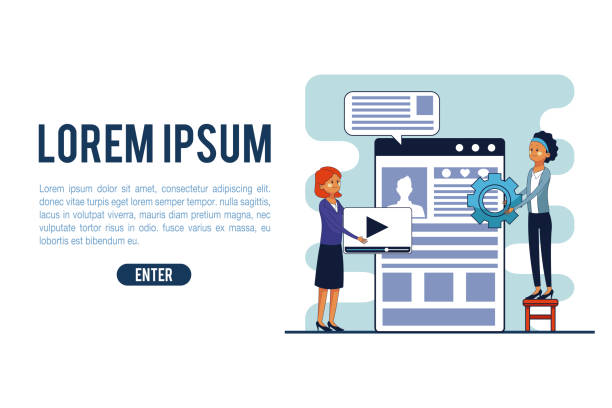
Before proceeding with #multilingual_website_design, a #detailed and comprehensive #planning is essential.
This stage includes determining target languages, understanding user culture and habits in each region, and choosing an appropriate strategy for content management.
The first step is #market_analysis and identifying the countries or regions whose audiences you intend to target.
Each language has its own culture, and your content must be localized accordingly.
Mere word-for-word translation is not enough; you must also consider idioms, cultural references, currency, dates, and even the display format of addresses and phone numbers.
This guidance stage helps you prevent costly mistakes in the future.
Also, you need to determine whether you intend to translate all website content or just key sections.
Some businesses might only need product pages and contact us pages translated, while others might want to include all blog articles and support sections.
Choosing the Content Management System (CMS) is also important at this stage.
Some CMSs, like WordPress with suitable plugins, provide good capabilities for managing multilingual websites, while others require more custom development.
Considering the financial and human resources needed for managing and updating multilingual content is also highly important.
This is a long-term investment that requires ongoing commitment.
With proper strategic planning, the path to a successful #multilingual_site is paved.
Technical Implementation Methods and URL Structure in Multilingual Websites

The #technical_implementation of a #multilingual_web_design can be done in various ways, each with its own advantages and disadvantages, and their selection depends on the website’s structure, resources, and SEO goals.
The three main approaches include using #subdomains, #subdirectories, and #country_code_top-level_domains (ccTLDs).
Each of these methods has a different impact on SEO and site management.
For example, using country-specific TLDs (like example.fr for France) sends the strongest geographical signal to search engines, but managing multiple domains and purchasing them can be costly and time-consuming.
Subdirectories (like example.com/fr/) are highly popular because they are easier to manage and inherit the main domain’s authority.
Subdomains (like fr.example.com) are another option that can be managed separately but search engines might consider them as completely distinct websites.
This #specialized aspect of design and development plays a vital role in the success of a multilingual site.
Choosing the right URL structure not only affects SEO but also influences user experience and ease of content management.
It should also be noted that in any method, the correct use of hreflang tags is essential for informing search engines about different language versions of a page.
This comparison table helps in better understanding these methods:
| Feature | Subdirectory | Subdomain | Country Code Top-Level Domain (ccTLD) |
|---|---|---|---|
| Sample URL | example.com/fr/ | fr.example.com | example.fr |
| SEO impact on main domain authority | High (shares) | Medium (shares less) | Low (completely independent) |
| Ease of management | High | Medium | Low (multiple domains) |
| Geographical signal for SEO | Medium | Medium | High |
| Cost | Low | Medium | High |
The Importance of Localization and High-Quality Content Translation in Multilingual Websites

One of the most important pillars of successful #multilingual_website_design is #localization and #accurate_content_translation.
This process goes far beyond merely replacing words from one language to another; it means completely adapting the content to the cultural norms, local idioms, units of measurement, and even date and time formats in the target markets.
A mere machine translation can never create the necessary #cultural_impact and may even lead to misunderstandings or the transmission of incorrect messages.
For a successful #multilingual site, investing in human translation by native translators who are experts in the relevant field is crucial.
These translators are not only fluent in the language but also fully familiar with the cultural and social nuances of the target region.
They can convey your brand’s tone, message, and values in a way that feels completely natural and appealing to local audiences.
For instance, some jokes or cultural references in one language might be meaningless or even offensive in another.
At this stage of education and guidance, the importance of attention to detail is emphasized.
Additionally, localization includes images, videos, and other visual elements.
For example, colors have different meanings in various cultures and must be chosen carefully.
A website with localized content not only builds trust with the audience but also significantly helps improve conversion rates and user engagement.
Ultimately, localization enhances your site’s quality in the eyes of international audiences and helps you, literally, go global.
Are you tired of your company’s website not meeting your expectations? With Rasaweb, design a professional website that truly represents your business.
✅ Increase attraction of new customers and sales leads
✅ Boost your brand’s credibility and trust with your audience
⚡ Get free website design consultation!
Search Engine Optimization (SEO) in Multilingual Design Projects

#Multilingual_SEO is one of the most complex yet crucial aspects of #multilingual_website_design.
Without proper search engine optimization, even the best translations and localizations will not reach the target audience.
The main challenge in multilingual SEO is ensuring that search engines correctly identify different language versions of your site and display them to the appropriate users.
Key tools for this include using hreflang tags, correct URL structure (which we discussed in the previous section), and geographical targeting strategies.
The hreflang tag tells Google and other search engines which version of a page is intended for which language or geographical region.
This is a specialized aspect that requires high precision, and failure to observe it can lead to duplicate content issues.
Furthermore, #keyword_research must be conducted separately for each language and region.
Popular keywords in one language might have a different meaning or not be used at all in another language.
Local tools for keyword research and attention to colloquial phrases in each language are essential.
Also, internal and external link building for each language version must be carefully managed.
High-quality and localized content in each language is the foundation of powerful SEO.
Multilingual website design with strong SEO helps you achieve higher rankings in new markets and attract more organic traffic.
This section provides comprehensive guidance to ensure your site is seen worldwide.
User Experience (UX) and User Interface (UI) in Multilingual Website Design
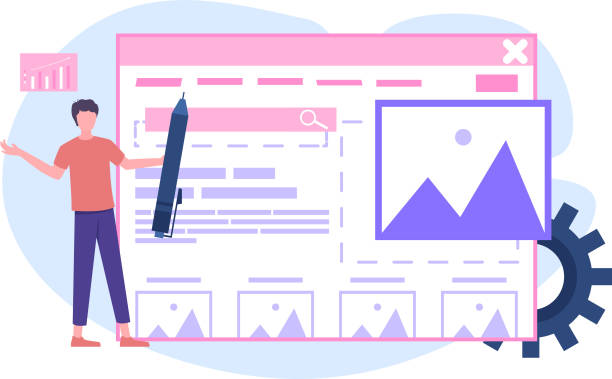
#User_Experience (UX) and #User_Interface (UI) play a vital role in the success of #multilingual_website_design.
A successful multilingual site should not only offer translated content but also provide a smooth and natural experience for users of every language.
This includes designing accessible and clear #language_switcher buttons, observing text direction (such as right-to-left for Persian and Arabic or left-to-right for English) and ensuring proper display of fonts and characters in all languages.
One of the main challenges is managing visual space; because text lengths can vary significantly across different languages.
Designers must consider the necessary flexibility in page layouts to prevent clutter or excessive empty space.
Intelligent language display based on user’s geographical location (IP Detection) as well as the option for manual language change optimizes the user experience.
However, users should be given the option to manually select the language, as IP detection is not always accurate.
In this specialized and guidance section, the importance of testing and feedback from real users in each language is emphasized.
Ensuring website compatibility with various devices and browsers in different regions of the world is also essential.
Page load speed in different geographical areas is also an important factor in UX.
Optimizing images and scripts for faster loading, especially for users with slower internet speeds, can create a positive experience.
The ultimate goal is to create a sense of comfort and familiarity for every visitor, as if your website was designed from the outset for their language and culture.
Common Challenges and Solutions in Managing Multilingual Websites
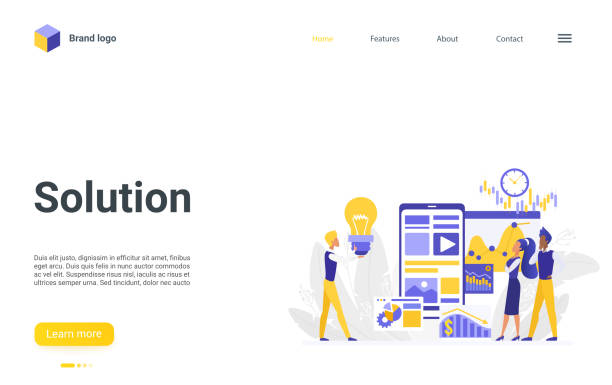
While #multilingual_website_design offers numerous benefits, it also comes with #unique_challenges that require intelligent solutions and meticulous planning.
One of the biggest challenges, #management_and_updating of translated content.
Maintaining synchronization between different language versions, especially when content is continuously updated, can be very complex.
Using powerful Content Management Systems (CMS) with built-in multilingual capabilities or specialized plugins can facilitate this process.
Another challenge, #maintaining_translation_quality over time and ensuring that translators are up-to-date with evolving terminology and cultures.
Investing in collaboration with reputable translation agencies and having a specialized Glossary is crucial to ensure consistency of terminology.
This is an analytical and thought-provoking content section that needs careful consideration: How can one ensure that the brand message remains consistent across all languages?
SEO-related issues can also be challenging, particularly concerning hreflang tags, where the slightest error in implementation can lead to language versions being ignored by search engines.
Technical problems such as slow page loading in different geographical regions due to server location should also be considered.
Using Content Delivery Networks (CDNs) can help resolve this issue.
Finally, legal and privacy aspects in different countries, especially regarding data collection and cookies, must also be observed.
This is a comprehensive overview of the obstacles ahead on the path to having a successful multilingual website.
To better manage these challenges, appropriate solutions and tools can be utilized:
| Challenge | Solution |
|---|---|
| Content Management and Synchronization | Use powerful multilingual CMSs, automated translation workflow |
| Maintaining Translation Quality and Localization | Collaborate with expert native translators, create a dedicated glossary |
| Correct Multilingual SEO Implementation (hreflang) | Consult with an SEO specialist, use hreflang validation tools |
| Site Performance and Loading Speed | Use CDN, optimize images and client-side code |
| Compliance with Local Laws and Regulations (Privacy) | Legal consultation, implement cookie banners and local privacy policies |
Common Tools and Platforms for Multilingual Website Development
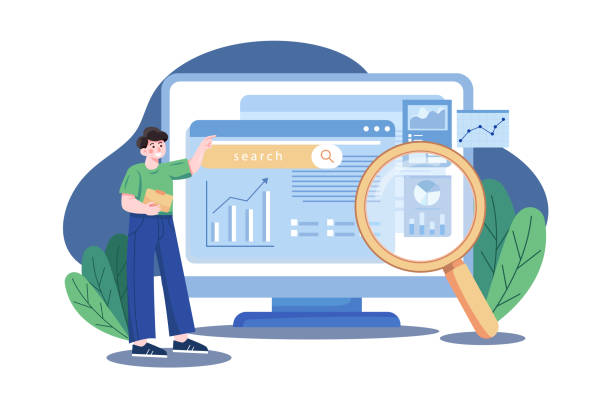
To facilitate #multilingual_site_development, various tools and platforms are available, each offering its own features and advantages.
The choice of the right tool depends on the project’s complexity, budget, and your development team’s expertise.
One of the most popular options is using Content Management Systems (CMS) like WordPress along with multilingual plugins.
Plugins such as WPML and Polylang in WordPress allow for easy management of translated content, language switching, and implementation of hreflang tags.
This approach is suitable for many small and medium-sized businesses due to its ease of use and large user community.
E-commerce platforms like Shopify and Magento also offer multilingual capabilities, although some more advanced features might require additional plugins or custom development.
For larger and more complex projects, more specialized solutions or the use of web development frameworks (such as React, Angular, Vue.js) with appropriate translation libraries might be needed.
#Translation_Management_Systems (TMS) tools are also very useful for coordinating the translation process between internal teams and external translators.
These tools provide capabilities for managing glossaries, Translation Memory, and review processes.
This educational and guidance section helps you become familiar with the available options.
Additionally, using Content Delivery Networks (CDNs) like Cloudflare or Akamai can improve site loading speed for users worldwide, which is a crucial factor in user experience and SEO.
Choosing the right tool smooths the path of multilingual website design and guarantees its success.
Did you know that 94% of a first impression of a company is related to its website design?
Rasaweb, by providing professional corporate website design services, helps you create the best first impression.
✅ Create a professional and trustworthy image for your brand
✅ Easier attraction of potential customers and improvement of online positioning
⚡ Get free corporate website design consultation!
Measuring Success and Analyzing Performance of a Multilingual Site

After #multilingual_website_design and its launch, #measuring_success and #performance_analysis are of particular importance.
Without accurate data, you cannot evaluate the effectiveness of your multilingual strategy and make informed decisions for its improvement.
Tools like Google Analytics and Google Search Console are essential for monitoring traffic, user behavior, and SEO performance in each language.
You should carefully track Key Performance Indicators (KPIs) such as the number of visitors from each country, conversion rate for each language, time spent on site, bounce rate, and keyword rankings in search engines.
Analyzing this data shows you which language versions perform better and which sections need more optimization.
For example, if the bounce rate is high for a specific language, it might indicate issues with translation quality, localization, or user experience for that group of users.
This is an analytical and informative approach to your site’s status.
In addition to quantitative data, collecting qualitative feedback from users can also be very valuable.
Surveys, feedback forms, and usability tests can provide deep insights into your site’s strengths and weaknesses in each language.
By regularly and accurately analyzing this data, you can continuously improve your multilingual website design strategies and ensure that your investment in this area yields maximum returns.
This data-driven approach is the key to sustainable success in the global market.
The Future of Multilingual Website Design and Emerging Trends
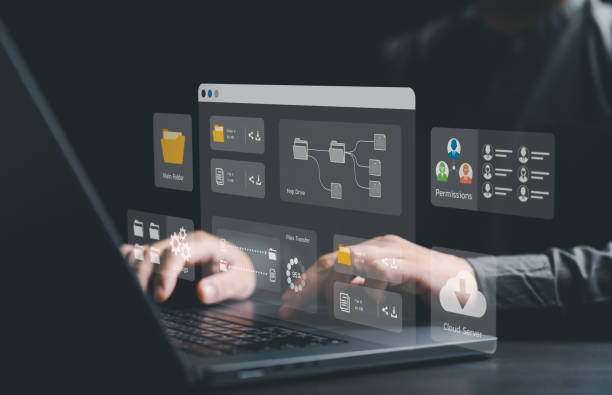
The world of #multilingual_website_design is rapidly evolving, and #emerging_trends can shape the future of this field.
Artificial Intelligence (AI) and Machine Learning (ML) are playing an increasing role in translation and localization.
Neural Machine Translation (NMT) has made significant progress and is capable of producing higher-quality and more natural translations, although it still requires human oversight and editing.
It is expected that in the future, AI will be able to perform content localization more intelligently and personalized, considering not only the language but also cultural preferences and even the individual user’s writing style.
This is an informative and analytical aspect that should be noted.
Furthermore, the expansion of voice search and virtual assistants also means that websites must be optimized to respond to voice queries in different languages.
This requires a deeper understanding of how phrases are expressed in various languages and optimizing content for direct answers.
Virtual Reality (VR) and Augmented Reality (AR) can also elevate the multilingual user experience to a new level by providing localized content in interactive environments.
Moreover, content personalization based on language, geographical location, previous user behavior, and even their emotions, is a future where the #multilingual_site will become much more dynamic and engaging.
Web developers and designers must be prepared for these changes and utilize the latest technologies to provide the best possible experience for global users.
These developments indicate that #multilingual_web_design is constantly advancing and provides new opportunities for interaction with international audiences.
Frequently Asked Questions
| Question | Answer |
|---|---|
| What is a multilingual website? | It is a website whose content is available to users in several different languages. |
| Why should we design a multilingual website? | To expand access to international audiences, increase site traffic, improve SEO in target markets, and provide a better user experience for non-Persian speaking users. |
| What are the main methods for implementing a multilingual website? | Using subdomains (e.g., en.mysite.com), using subdirectories (e.g., mysite.com/en/), and using separate domains for each language (e.g., mysite.com and mysite.de). |
| Which implementation method is better for SEO? | Generally, using subdirectories (language folders) is often recommended due to the transfer of main domain authority to other languages. |
| What is the Hreflang tag and what is its use? | It is an HTML tag or HTTP Header that informs search engines which version of a page is suitable for which language or geographical region. This tag prevents duplicate content and improves SEO. |
| How is a Language Switcher designed? | Usually by using a dropdown menu, button, or flag in the site’s header or footer, which allows the user to select their preferred language. |
| Is automatic (machine) translation suitable for a multilingual site? | No, machine translation usually has low quality and many errors that can damage the site’s credibility. Human translation or a combination of human translation and machine editing is recommended. |
| What are the most important SEO tips in multilingual website design? | Correct use of the Hreflang tag, having an appropriate URL structure for each language, translating titles and meta descriptions, translating main content, internal linking between related language versions. |
| Should all website content be translated? | It depends on the strategy. Usually, the main and important content of the site should be translated. Less important sections or blogs may not require full translation. |
| What are the main challenges in multilingual website design? | Content management in different languages, translation costs, technical issues related to URLs and language tags, template compatibility with right-to-left (RTL) languages like Persian and Arabic, and multilingual SEO management. |
And other services of Rasaweb Advertising Agency in the field of advertising
Smart Sales Automation: A dedicated service for growth in website traffic based on attractive UI design.
Smart Marketing Automation: A combination of creativity and technology to increase click-through rates by designing attractive UI.
Smart Digital Advertising: A fast and efficient solution for analyzing customer behavior with a focus on attractive UI design.
Smart Reportage: An innovative platform for improving campaign management with custom programming.
Smart Marketplace: A fast and efficient solution for digital branding with a focus on optimizing key pages.
And over a hundred other services in the field of internet advertising, advertising consultation, and organizational solutions
Internet Advertising | Advertising Strategy | Advertorial
Resources
The Role of Multilingual Website in Business Expansion
Advantages of Multilingual Website Design
Website Requirements for Global Business
Global Digital Marketing Strategies
? For the growth and prominence of your business in the online space, Rasaweb Afarin Digital Marketing Agency is with you, offering the best services. To enhance your digital presence and learn more about our solutions, please visit our professional services, including personal website design.
📍 Tehran, Mirdamad Street, next to Bank Markazi, Kazerun Jonoubi Alley, Ramin Alley No. 6



